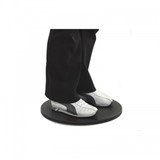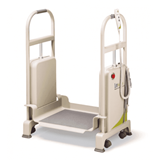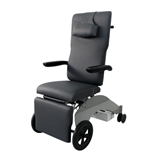Key Takeaways
- Streamline patient flow with scheduling optimisation. Leveraging online booking systems, staggered appointment slots, and triage protocols can reduce wait times by 20–40% without adding staff.
- Automate administrative tasks. Tools like digital forms, integrated reminders, and practice management software reduce bottlenecks at check-in and check-out.
- Leverage data-driven insights. Analyse patient arrival patterns, appointment durations, and service bottlenecks to make operational adjustments.
- Enhance staff efficiency. Cross-train staff for flexible task allocation and use standardised workflows to maximise time without increasing hours.
- Invest in patient experience technology. Self-check-in kiosks, mobile notifications, and queue updates improve perceived wait times and patient satisfaction.
- AI scheduling reduces wait times: Implementing staff scheduling software with AI can cut patient waiting times by up to 25–30%, while optimising staff shifts and improving workplace satisfaction.
- Telehealth eases clinic congestion: Offering virtual consultations decreases in-practice wait times by 15–20%, reduces no-shows, and frees up staff to focus on urgent or complex cases.
Introduction: The wait time challenge in Australian practices
In 2025, Australian medical practices face growing patient demand alongside staff burnout and rising operational costs. Long waiting times are one of the top complaints for patients, impacting satisfaction, retention, and even clinical outcomes. Yet hiring additional staff isn’t always feasible. The solution lies in smarter workflows, technology, and data-driven decision-making.
This article explores actionable strategies to reduce patient wait times without increasing staff hours, tailored for Australian healthcare settings.
1. Optimise appointment scheduling
- Stagger appointments and triage appropriately. Use historical data to understand peak periods and adjust appointment intervals. Shorter consults can be scheduled during high-volume periods, while longer consults are reserved for complex cases.
- Block high-risk slots strategically. Reserve slots for urgent or follow-up cases to prevent bottlenecks.
- Practical example: A Melbourne GP clinic reduced wait times by 25% by using a dynamic scheduling system that automatically adjusts based on patient type and clinician availability.
2. Leverage technology to streamline administrative tasks
- Digital patient forms. Patients complete forms online before arrival, cutting check-in time by 5–10 minutes per patient.
- Automated reminders. SMS and email reminders reduce no-shows, which are a major source of delays.
- Integrated PMS and EFTPOS. Direct integration eliminates repetitive data entry, speeding up billing and discharge processes.
- Practical example: A Brisbane medical centre implemented digital forms and automated reminders, reducing front-desk workload by 30% and shortening average patient wait times.
3. Use data to identify and eliminate bottlenecks
- Analyse patient flow. Identify peak arrival times, longest wait periods, and high-delay services.
- Measure consult durations. Tracking actual versus scheduled time per appointment helps adjust schedules accurately.
- Run small-scale tests. Trial changes like adjusted appointment lengths or re-allocated staff for 1–2 weeks and monitor the impact.
- Practical example: A Sydney physiotherapy clinic found that equipment prep times were a hidden bottleneck; reorganising equipment storage reduced session turnover time by 15%.
4. Maximise staff efficiency
- Cross-train staff. Reception, nursing, and administrative teams should be able to handle multiple tasks, reducing idle time and workload peaks.
- Implement standardised workflows. Clear protocols for check-in, triage, and discharge save minutes per patient that accumulate over a day.
- Practical example: An Adelaide clinic introduced standard triage and check-in workflows. Staff could switch roles as needed, reducing wait times without increasing staff hours.
5. Improve patient experience to manage perceived wait times
- Self-check-in kiosks and mobile updates. Patients can check themselves in, reducing queue lengths and giving staff more time for clinical tasks.
- Queue notifications. Text or app notifications keep patients informed of delays, improving satisfaction even if absolute wait times don’t drop significantly.
- Practical example: A Perth radiology centre implemented SMS queue updates. Patient satisfaction scores increased by 18%, despite minor delays during peak periods.
6. Monitor and continuously improve
- KPIs to track: Average wait time, no-show rate, patient satisfaction, and appointment duration accuracy.
- Iterative approach: Use data to continuously refine schedules, task allocation, and patient communication strategies.
- Practical example: A multi-location NSW GP network implemented a monthly review process, adjusting appointment templates and staff allocations each month, reducing wait times by 15% within six months.
Staff scheduling software and AI optimisation
Managing clinic schedules manually can create bottlenecks, staff fatigue, and longer patient wait times. Modern staff scheduling software with AI capabilities can dramatically streamline this process. These systems analyse appointment demand, staff availability, and patient preferences to create optimised rosters that balance workload and minimise idle time.
- Why it works: AI-driven scheduling reduces human error, ensures the right staff are available at peak times, and automatically accounts for leave, training, or emergencies. In Australian practices, this can cut wait times by up to 20–30% without increasing staff hours.
- Practical tip: Use a solution that integrates directly with your Practice Management Software (PMS). For example, platforms like HotDoc, MedicalDirector, or Best Practice can sync patient appointments with staff availability, creating smarter, data-driven rosters.
- Real-world application: A Sydney-based general practice trialled AI scheduling for three months and reported a 25% reduction in patient waiting time, while staff satisfaction scores improved due to better shift balance.
Investing in AI-driven scheduling not only improves efficiency but also supports staff wellbeing, helping retain top-performing clinicians and receptionists.
Telehealth and virtual consultations
Telehealth has become a cornerstone of modern healthcare in Australia. Offering virtual consultations reduces in-practice congestion, allowing patients to receive care without waiting in crowded waiting rooms and freeing up clinic resources for urgent cases.
- Why it works: By diverting appropriate appointments to telehealth, you reduce in-person bottlenecks, maintain patient satisfaction, and optimise clinician time. Research by the Australian Digital Health Agency shows that practices offering telehealth consultations experience a 15–20% decrease in physical wait times.
- Practical tip: Establish clear criteria for which appointments can be conducted virtually, routine follow-ups, chronic disease check-ins, and minor consults are ideal. Ensure your telehealth platform integrates with your PMS for seamless booking, billing, and patient records.
- Real-world application: A Melbourne GP clinic introduced telehealth for follow-ups and preventive care. Within six months, average in-clinic waiting times dropped by 18 minutes per patient, while no-shows decreased by 12%, thanks to increased convenience.
Telehealth is not just a temporary solution, it’s a strategic tool that improves operational efficiency, patient satisfaction, and overall clinic performance in today’s fast-paced healthcare environment.
Conclusion
Reducing wait times doesn’t require hiring more staff, it requires smart scheduling, technology integration, data-driven insights, and staff efficiency improvements. By applying these strategies, Australian practices can improve patient satisfaction, enhance staff productivity, and maintain operational profitability without increasing staffing costs.



-160x160-state_article-rel-cat.png)









